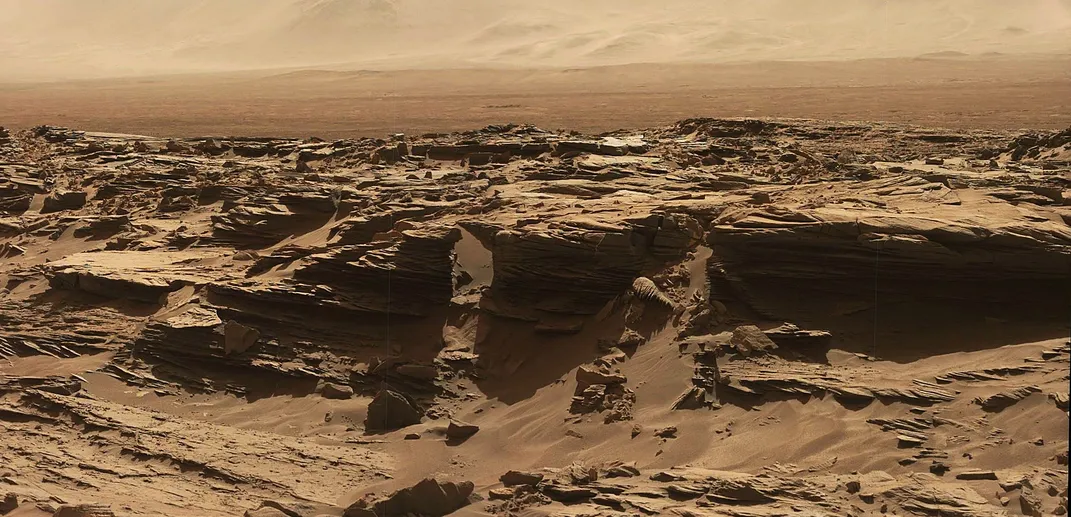Here’s a Panoramic Glimpse of the Curiosity Rover’s Next Destination
Welcome to Murray Buttes. You are now free to rove about the landscape
When the Curiosity rover landed on Mars, it chose one of the planet’s most fascinating features to explore: Gale Crater, a divot that once held ancient lakes. But now, the rover is exploring brand-new territory as it climbs a Martian mountain—and along the way, it’s photographing planetary features reminiscent of places back on Earth.
The vista you see above is of a far-off place called Murray Buttes. It’s a mesa on the lower parts of Mount Sharp, a three-mile-high mountain the size of Mount Rainier that the rover reached in 2014 after its mission was retooled (sharp rocks punctured the rover’s tires, so scientists had to make a new route on finer terrain). The formation was named after Bruce Murray, a planetary geologist known for his contributions to some of NASA’s earliest Mars missions.
The rover took the full-circle vista of the buttes on August 5, four years after it landed inside Gale Crater. As with other panoramas, the rover used Mastcam, its high-tech image and video camera mounted to a mast on its deck, to take the snapshots.
Scientists think that Murray Buttes, which looks kind of like an Earth-bound mesa, is made of sandstone formations that are now covered in rock. Part of the geological layer called the Murray Formation, the buttes likely formed when winds deposited sand from Mount Sharp’s lower layer, the agency explains in a release. Like mesas on Earth, the rock that caps off the buttes are hard and erosion resistant.

Curiosity’s trip to Murray Buttes isn’t just a photographic vacation, of course: The images will be used to analyze the stratigraphy, or rock layering, on the planet’s surface. Geologists hope that they can use the rover’s photos and rock samples to figure out more about Mars’ potential to harbor life.
It’s slow going for the rover—so far, Curiosity hasn’t even traveled the length of Manhattan. But not to worry: When it comes to Mars exploration, it’s not as much about distance as depth. The more in-depth photos and observations the rover can take of the red planet, the better—and each panorama brings scientists one step closer to understanding what the planet was once like. Stay tuned: the rover should produce even more butte-i-ful pictures in the coming days and weeks.
/https://tf-cmsv2-smithsonianmag-media.s3.amazonaws.com/accounts/headshot/erin.png)


/https://tf-cmsv2-smithsonianmag-media.s3.amazonaws.com/accounts/headshot/erin.png)